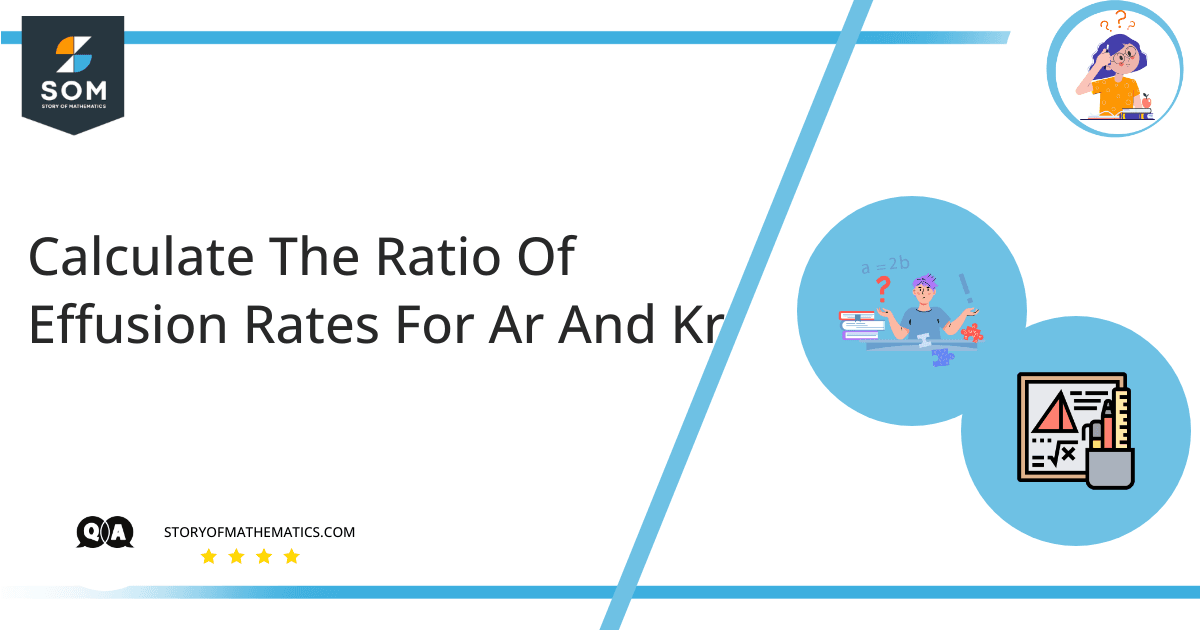
This question is from the chemistry domain and aims to explain the basic concepts related to the periodic table, Molar masses, the ratio of effusion rates, and Graham law to determine the effusion rate.
In the periodic table, the chemicals are displayed in a tabular manner. The periodic table sometimes is also named the periodic table of the chemical elements. Periodic is considered the icon of chemistry and is widely used in physics, chemistry, and other sciences. periodic law states that the properties of the chemical elements show a systematic dependence on their atomic numbers. The rows in the periodic table are called the period and the columns are called the groups. Elements in the same groups represent the same chemical properties. There is a total of $18$ groups and $7$ periods in the periodic table.
Mass in grams of one mole of the element in the molar mass of the substance. The amount of entities e.g molecules, ions, and atoms present in a substance is defined as a mole. A mole of any substance is given by:
\[ 6.022 \times 10^{22} \]
The rate of effusion of a gaseous essence is inversely proportional to the square root of its molar mass. This relationship is directed to Graham’s law, after the Scottish chemist Thomas Graham (1805–1869). The proportion of the effusion rates of two gases is the square root of the inverse ratio of their molar masses:
\[ \dfrac{rate_{Ar}}{rate_{Kr}} = \sqrt{ \dfrac{M_{Kr}}{M_{Ar}}} \]
Expert Answer
Ar is a chemical element that represents Argon gas. Argon has the atomic number $18$ and lies in the group $18$ of the periodic table. Argon is a noble gas and has a molecular mass of $39.948$.
Kr is a chemical element that represents Krypton. Krypton has the atomic number 36 and lies in the group $18$ of the periodic table. Krypton is an odorless, tasteless, and colorless noble gas and has a molecular mass of $83.789$.
Molar mass of argon is $M_{Ar} =39.948 g/mol$
Molar mass of Krypton is $M_{Kr} =83.798 g/mol$
To determine the ratio of effusion rates, substitute the molar masses in Graham’s law:
\[ \dfrac{rate_{Ar}}{rate_{Kr} }= \sqrt{\dfrac{M_{Kr}}{M_{Ar}}} \]
\[ \dfrac{rate_{Ar}} {rate_{Kr}} = \sqrt{ \dfrac{83.798} {39.748}} \]
\[ \dfrac{rate_{Ar}} {rate_{Kr}}= 1.4483 \]
Numerical Answer
The ratio of effusion rates for $Ar$ and $Kr$ is $1.4483$.
Example
Unknown gas has a rate of effusion of $9.20 mL/min$. The rate of effusion of pure nitrogen (N_2) gas under identical conditions is $14.64 mL/min$. Using Graham’s law, identify the unknown gas.
\[ \dfrac{rate_{X}}{rate_{N_2}} = \sqrt{ \dfrac{M_{N_2}} {M_{X}} } \]
We have to identify the $M_X$ to, For this, we are taking squares on both sides.
\[ \left( \dfrac{rate_{X}}{rate_{N_2}} \right)^2 = \dfrac{M_{N_2}} {M_{X}} \]
Plugging the values and solving for $M_X$:
\[ \left( \dfrac{9.20 \space mL/min}{14.65 \space mL/min} \right)^2 = \dfrac{28.0 \space g/mol} {M_{X}} \]
\[ M_x = \dfrac{28.0 \space g/mol} {\left( \dfrac{9.20 \space mL/min}{14.65 \space mL/min} \right)^2} \]
\[M_X = 71.0 \space g/mol \]
$71.0 \space g/mol$ is the molar mass of the unknown gas.
